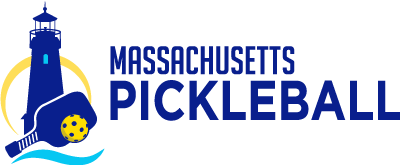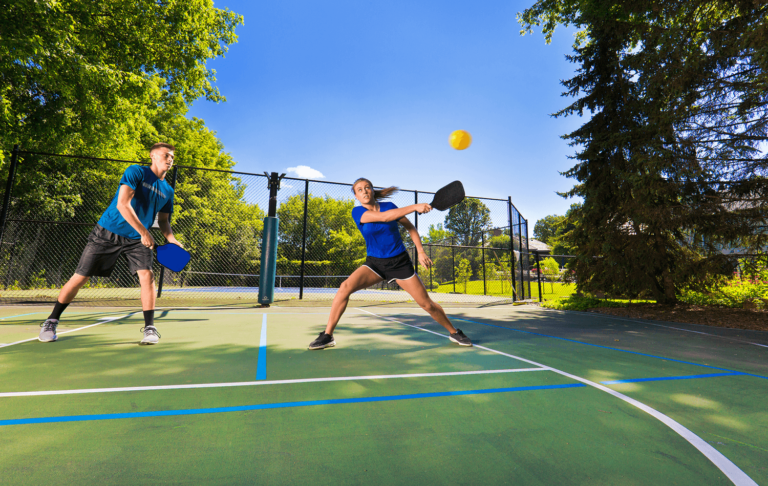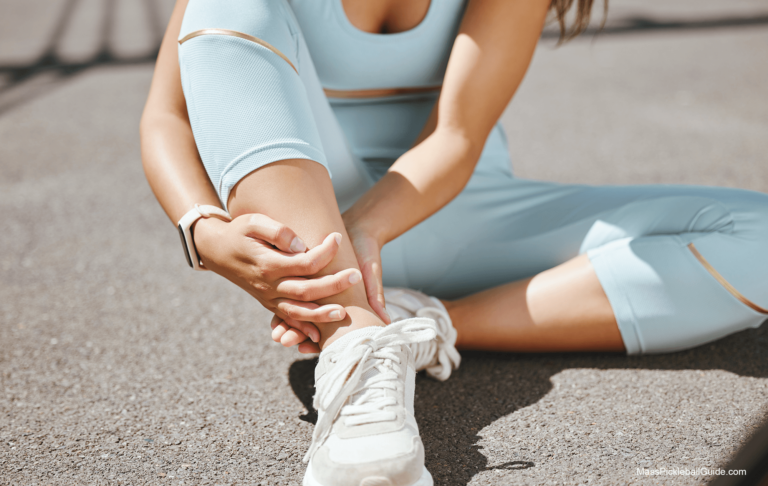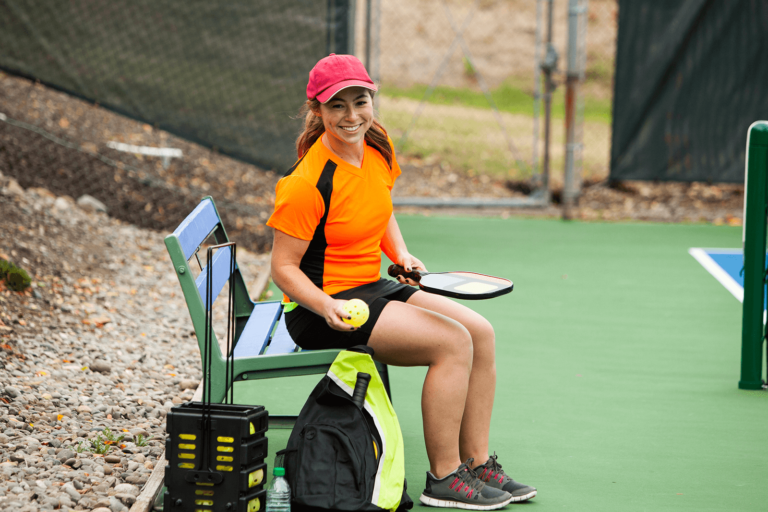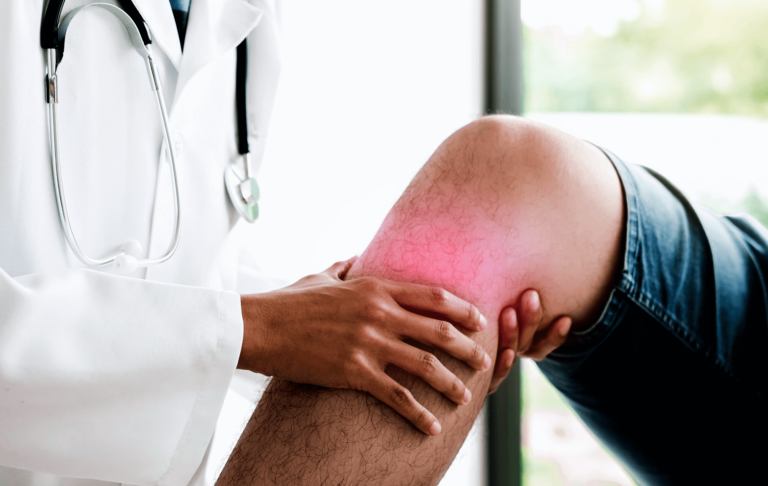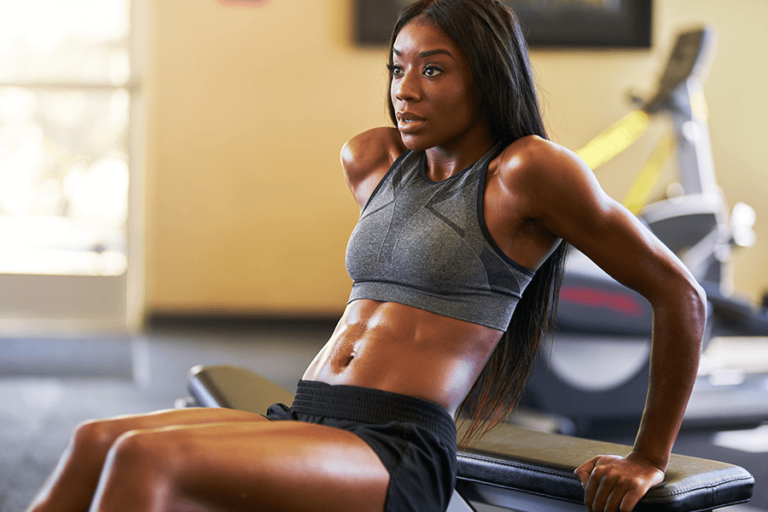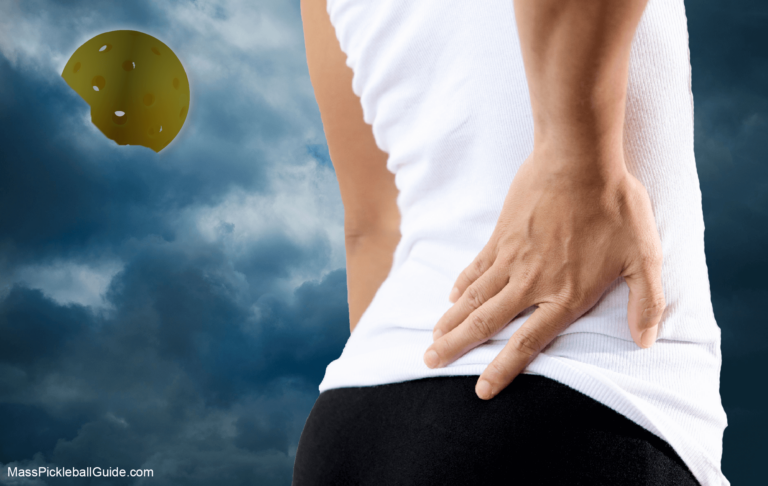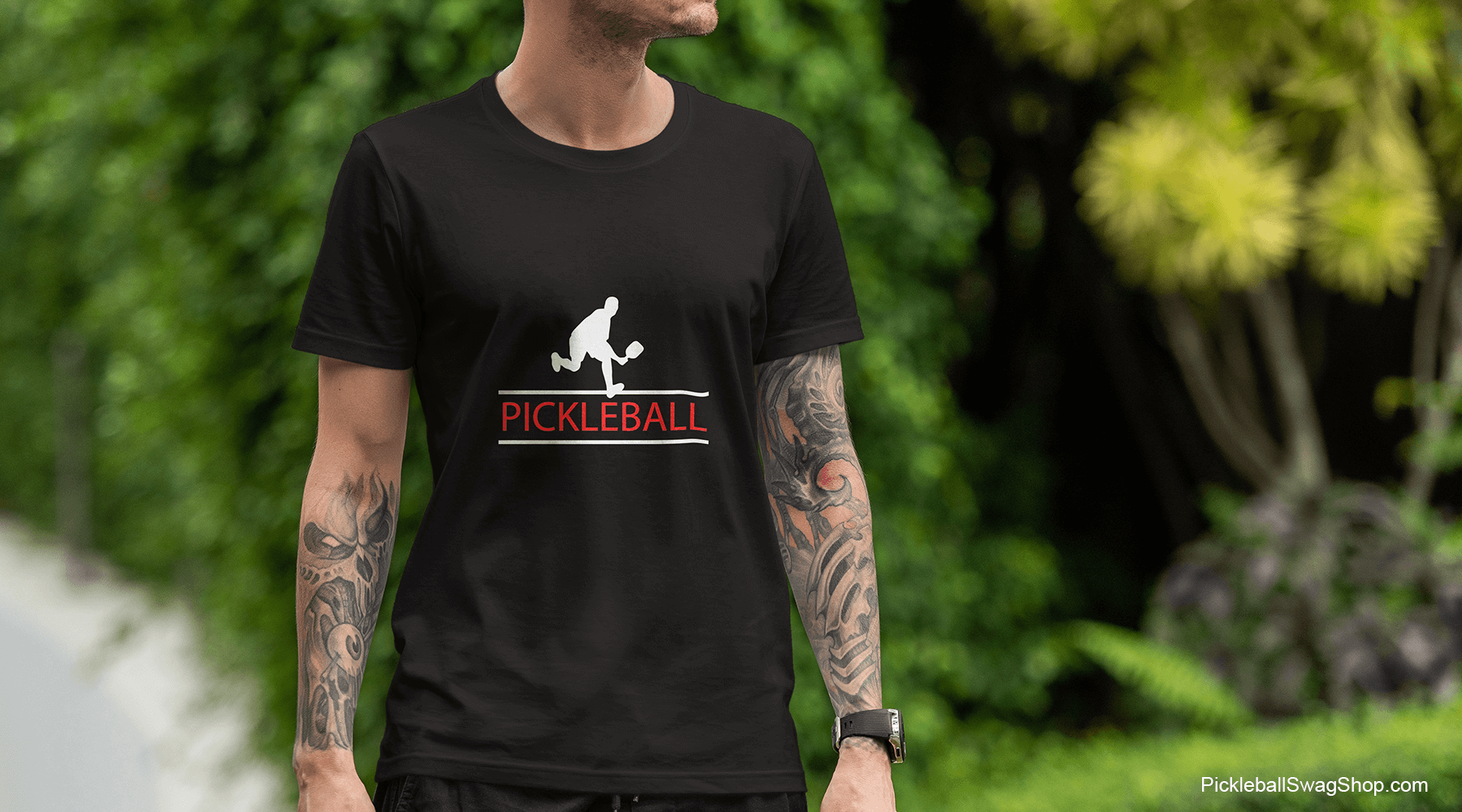Pickleball Elbow Strains: Symptoms, Causes, and Prevention
this can be painful
It’s real and it’s painful for sure: pickleball elbow. Technically referred to as lateral epicondylitis, this elbow injury can be both painful and frustrating.
This article delves into understanding it and, more importantly, how to avoid it.
What is Pickleball Elbow?
Pickleball elbow, or lateral epicondylitis, results from repetitive strain on the tendons that connect the forearm muscles to the elbow’s outer bone. Think of it as a cousin to tennis elbow. While tennis players frequently experience the same symptoms, the pickleball court dynamics can present slightly different challenges.
Key Differences between Tennis and Pickleball Injuries:
| Factor | Tennis | Pickleball |
|---|---|---|
| Playing Area | Larger court | Smaller pickleball field |
| Paddle/Racket Weight | Heavier tennis rackets | Lighter pickleball paddles |
| Ball Weight and Speed | Faster and heavier tennis balls | Slower, wiffle-like balls |
| Stroke Mechanics | Overhead serves and swings | Underhand serves and more wrist-involved shots |
It’s the combination of the pickleball paddle’s grip, the unique mechanics of the shots, and the confined space of the pickleball court that predisposes some players to this specific kind of elbow pain.
Did you know? Shin splints are another common injury in the pickleball world.
Symptoms of Pickleball Elbow
If you’re a pickleball player, especially one who’s recently transitioned from other racquet sports, understanding the symptoms of pickleball elbow is crucial. Knowing what to look out for can mean the difference between a minor discomfort and a long-term injury. Here’s a list to help you identify any warning signs:
- Pain and Tenderness: Usually located on the outer part of the elbow, it can sometimes extend to the forearm.
- Stiffness: A noticeable stiffness in the elbow, especially in the mornings.
- Weakness: A weakened grip is a common sign. This might make holding the pickleball paddle or performing daily tasks challenging.
- Numbness or Tingling: This can radiate down to the fingers.
- Increased Discomfort: Especially when making a fist, gripping objects, or turning a doorknob.
With the increasing popularity of pickleball and the joy it brings, it’s essential for players to prioritize their health. This includes understanding the game’s mechanics and being aware of the physical challenges, such as the strain it can place on one’s elbow.
See more here: 5 Common Pickleball Injuries in 2023 and How to Avoid Them
Preventive Measures for Pickleball Elbow
Prevention is undoubtedly better than cure. The pickleball sport, though engaging and rewarding, requires a proactive approach to protect oneself from potential injuries, especially pickleball elbow. Here’s a guide to preemptively safeguarding your elbow:
- Right Pickleball Paddle Grip:
The grip size and style of your pickleball paddle can significantly influence the strain on your elbow. A grip that’s either too large or too small can increase the risk of lateral epicondylitis. Find a grip that comfortably fits your hand, allowing you to maintain a firm yet relaxed hold. - Warm-Up Properly:
Engage in a thorough warm-up, focusing on both your upper and lower body. This ensures your muscles are ready for the game’s demands. Remember to stretch your arms, especially the forearms, to prepare for those backhand shots. - Master the Pickleball Mechanics:
Correct playing technique can’t be stressed enough. By mastering the game fundamentals, you reduce the risk of injuries significantly. It might be beneficial to take a lesson or two to understand the proper playing form, especially if you’re new to the game or transitioning from another racquet sport. - Equipment Check:
Regularly check your equipment. Damaged or worn-out paddles can affect your game mechanics, leading to unnecessary strain. - Stay Fit:
Engage in strength training exercises focusing on the forearm and arm muscles. A robust musculature can handle the game’s stresses better, reducing the risk of injuries. - Rest and Recuperate:
Don’t ignore the body’s signals. If you feel any discomfort or pain, it’s essential to rest and allow your body to recover. Regular breaks between games can also prevent cumulative strain.
Tip: While pickleball offers a fantastic workout and competitive thrill, integrating other forms of exercise can help balance the muscle groups used and decrease the risk of overuse injuries.
Treating Pickleball Elbow
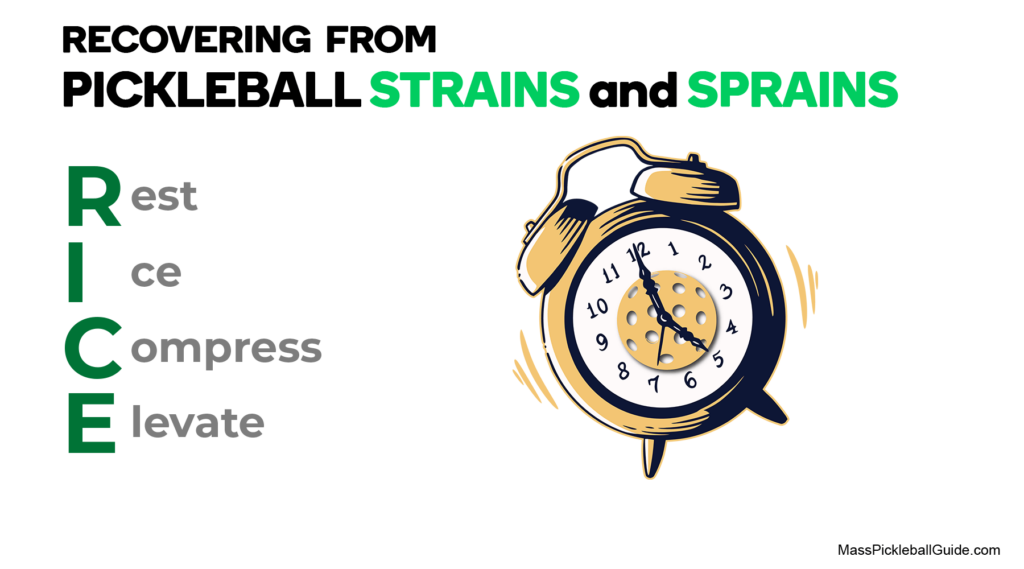
If, despite your best efforts, you find yourself grappling with the symptoms of pickleball elbow, don’t despair. Many effective treatments can alleviate pain and facilitate recovery.
- Rest:
The first and foremost remedy is to allow your elbow ample time to heal. Avoid playing or any strenuous activities that exacerbate the pain. - Ice:
Applying ice to the affected area can reduce inflammation and provide relief from pain. Use an ice pack for 15-20 minutes every few hours. - Compression:
Wearing an elbow brace or strap can provide support and reduce strain on the injured tendons. - Elevation:
Keeping the elbow elevated can help minimize swelling, especially in the initial days following the onset of symptoms. - Anti-Inflammatory Medications:
Over-the-counter pain relievers like ibuprofen can help reduce inflammation and pain. However, always consult a healthcare professional before starting any medication. - Physical Therapy:
A trained physical therapist can provide exercises and stretches tailored to strengthen the muscles and improve flexibility. They can also offer valuable insights into your pickleball mechanics to prevent future occurrences. - Alternative Therapies:
Techniques such as acupuncture, massage, and laser therapy have shown promise in treating tennis elbow and might be beneficial for pickleball elbow as well.
Remember, each player’s journey is unique. What works for one might not work for another. It’s essential to listen to your body and consult a medical professional if the pain persists.
Easing Pickleball Elbow Pain
As pickleball players push their boundaries on the court, the relentless drive can occasionally lead to discomfort. This is a revolutionary formula designed specifically to offer temporary relief for such occasional aches.
A large number of pickleball players report significant relief after this. It’s not just about easing the pain; it’s about reclaiming the freedom of movement and the joy of the game.
